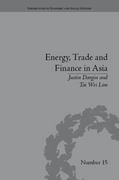Question
A monopolist is making specialty microchips. Assume demand for the microchips is Q = 10 P and the firm currently has a patented production process
A monopolist is making specialty microchips. Assume demand for the microchips is Q = 10 P and the firm currently has a patented production process that results in constant marginal cost of $6. There is no fixed cost. Either the monopolist or a potential entrant can invest in a new innovative production process that allows for constant marginal cost of production of $5.
(a) Assume that if the monopolist develops the innovation, they patent it and the entrant will not enter. If the monopolist does not develop the innovation, the potential entrant will develop it and the firms will compete on quantities (Cournot). How much is the monopolist willing to invest in the innovation to develop it before the potential entrant?
(b) How much is the entrant willing to invest in the innovation to develop it before the monopolist?
(c) Which firm has greater incentive to innovate? Explain the intuition underlying this result. It can be argued that this so-called efficiency effect leads to the "persistence of monopoly." Why?
Please answer with mathematical work where needed.
Step by Step Solution
There are 3 Steps involved in it
Step: 1

Get Instant Access to Expert-Tailored Solutions
See step-by-step solutions with expert insights and AI powered tools for academic success
Step: 2

Step: 3

Ace Your Homework with AI
Get the answers you need in no time with our AI-driven, step-by-step assistance
Get Started


